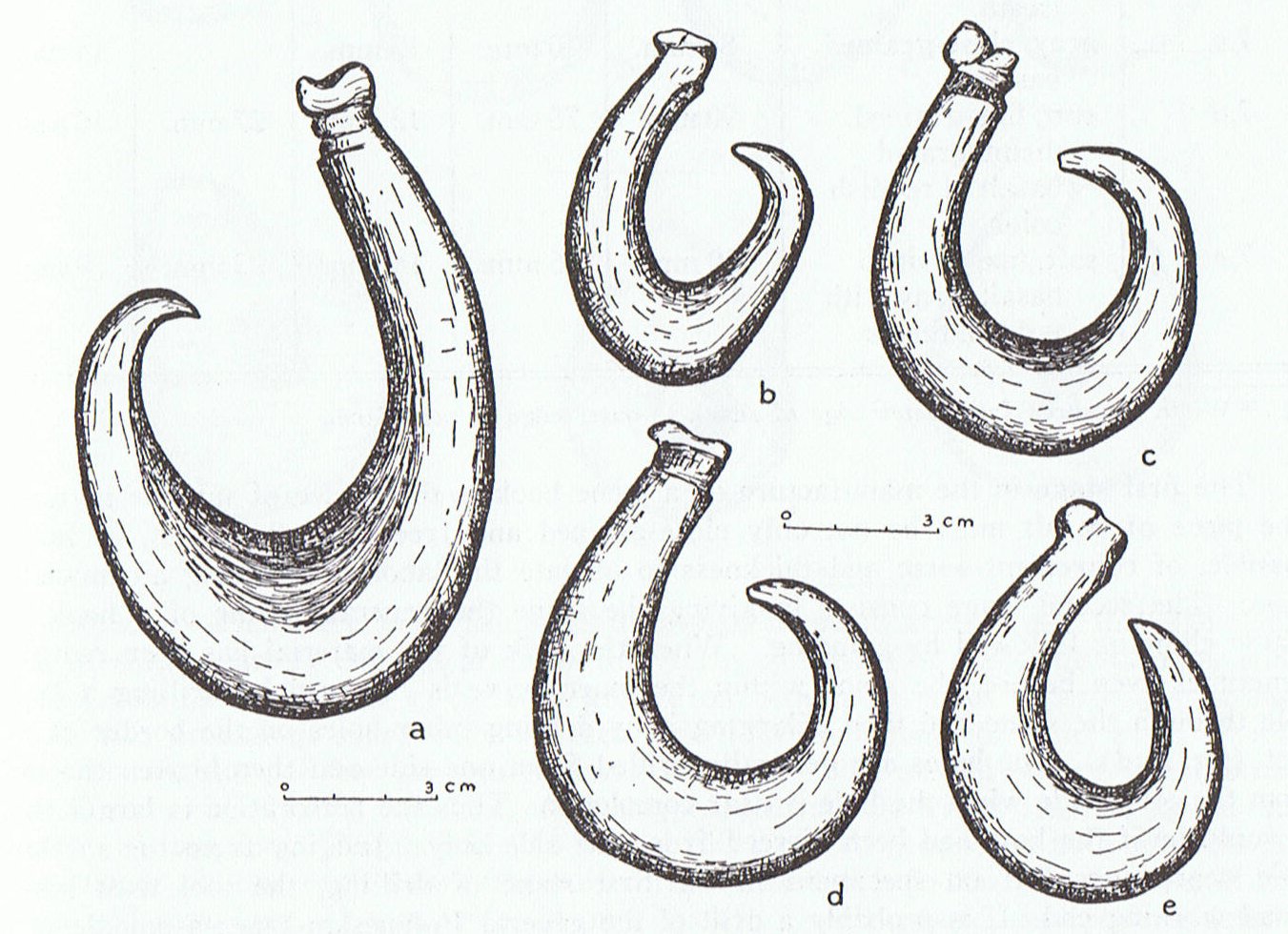4. At noon, according to the 'calendars' for the day-time, yet another type of hakaturou glyph was used, maybe illustrating a fish hook:
Métraux describes the shape of the old stone fishhooks: "The pattern of the stone hooks is uniform throughout, the principal variations being in thickness at the bend and in the distance between the point and the shank. Most of the fishhooks have a continous curve, but in one specimen (b) ... the limb from the bend to the point is almost straight. The shank is topped by a knob or projecting ridge with transverse grooves. A depression in the knob divides it into two unequal parts - one rounded, and the other small and sharp ... which is generally toward the point. Below the ridge there is a recess, the inner margin of which is sometimes serrated. The knob so divided strongly resembles the outlines of birds' heads as represented on the tablets ..." The resemblance between a fish hook and this variant of hakaturou is exemplified also in the middle of the year:
The sign of middle in Ab7-38 (a vertical straight line) can be compared with the similar sign in Ha6-3. If Ha6-6 and Ab7-39 (and other similar hakaturou glyphs) are drawn like fish-hooks, then by what reason? One possibility is that at noon and at other 'midstations' in the cycles of time a new 'land' (= the 2nd part of the cycle - for instance p.m.) must be fished up from the deeps. |






